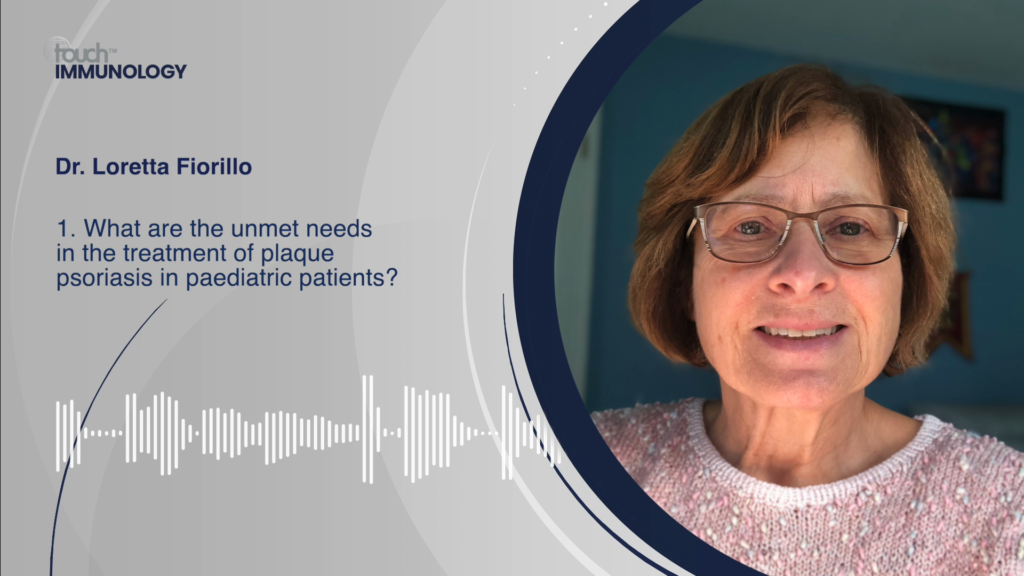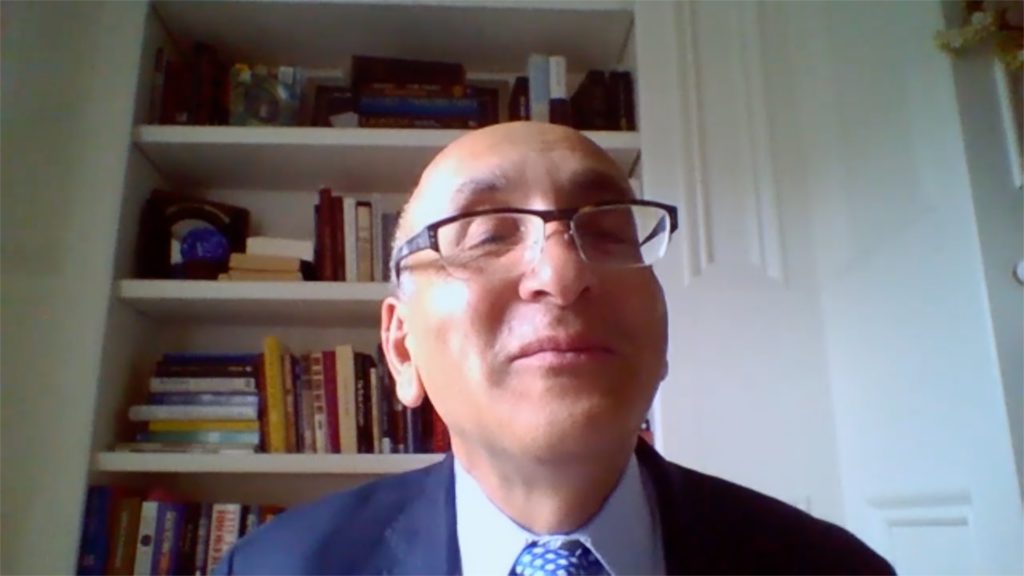Ixekizumab is a humanized monoclonal antibody currently approved in patients with moderate-to-severe plaque psoriasis. We caught up with Dr Alan Menter (Baylor University Medical Center, Dallas, TX, USA) to discuss the aims, design, inclusion criteria and main findings of a post-hoc analysis conducted on trials studying the use of ixekizumab in adult and paediatric patients with moderate-to-severe plaque psoriasis.
The abstract ‘Palmoplantar psoriasis complete clearance is achieved rapidly and sustained with ixekizumab treatment in adult and pediatric patients with moderate-to-severe plaque psoriasis’ (Poster ID: 41824) was presented at AAD 2023, 17-21 March, 2023.
This information is brought to you by Touch Medical Media and is not sponsored by, nor a part of, the AAD.
Questions
- What impact has ixekizumab already had on the treatment paradigm for plaque psoriasis? (0:24)
- What were the aims, design and inclusion criteria of this post-hoc analysis? (0:56)
- What were the findings in terms of rapid improvement and sustained response with ixekizumab? (3:20)
- How will these insights optimize the use of ixekizumab in clinical practice? (4:04)
Disclosures: Alan Menter has nothing to disclose in relation to this video interview.
Support: Interview and filming supported by Touch Medical Media Ltd. Interview conducted by Atiya Henry.
Filmed in coverage of the 2023 AAD Annual Meeting.
Click here for more content on psoriasis.
Transcript
My name is Alan Menter. I am the chair of Dermatology here in Baylor in Dallas. And I initiated the International Psoriasis Council in 2003, which is now worldwide. And my main area of interest is psoriasis.
What impact has ixekizumab already had on the treatment paradigm for plaque psoriasis? (0:24)
I think it’s in a very good place with the role of all the IL-17s and IL-23s and TNF-alpha drugs that we now have nine, ten drugs. And I think ixekizumab has done a very good job for ordinary plaque psoriasis. Whether it’s more effective for palmoplantar psoriasis is debatable, but ixekizumab has been effective. It’s a good drug. It’s a safe drug. And it’s been around for a long enough time that we feel comfortable using it.
What were the aims, design and inclusion criteria of this post-hoc analysis? (0:56)
Quality of life, I think, is the most important inclusion criteria for the post-hoc analysis. In other words, how long after the treatment has been discontinued, and the patient is clear? How long will the patient’s palmoplantar psoriasis stay clear without recurring? We cannot predict when it is going to recur, either on the hands or the feet or both. So the most important inclusion criteria for long term treatment is the sustained response of ixekizumab. It does have a good response, I have some patients clear for 6 to 9 months, but it’s a chronic disease that almost inevitably recurs even after it’s been cleared. So the big question is when do you stop the treatment or do you just have to continue the treatment, even when the patient is clear? It’s a very big question that dermatologists in clinical practice have to put up with. I think the aims and design is to see if there’s any possible way you could predict a flare up of palmoplantar psoriasis, pustular or plaque type psoriasis. We don’t have any definitive genetic or immunological criteria that can predict when is the disease going to flare up and when can you stop the treatment and when can you restart the treatment. So I think that is one of the major factors at the moment that people are working on is to try and have predictions. There’s a company now that has a new test that you do a little a patch test on psoriasis, and you put the patch on the back to see when the psoriasis is going to flare up. Whether that’s going to predict palmoplantar or not is debatable. So we don’t yet have a genetic or immunological definitive criteria to predict the use of ixekizumab or any other drug, topical or systemic or biologic, for palmoplantar psoriasis. It is truly one of the most difficult forms of psoriasis that we have. Very recalcitrant and very difficult to treat.
What were the findings in terms of rapid improvement and sustained response with ixekizumab? (3:20)
I think in the majority of cases there was both rapid response and sustained response. But the big question I keep bringing up is, how long do you have to continue ixekizumab when the patient is clear. Because every patient says: I’m clear, do I need to continue taking my therapy? And I have many, many patients who’ve been clear for a year or two. And I still tell them that I cannot predict immunologically or genetically when your disease is going to flare back up again. So I’ve kept them and maintain them on treatments and expensive therapy. But fortunately it’s a drug that has got good safety issues.
How will these insights optimize the use of ixekizumab in clinical practice? (4:04)
Number one, I think it’s one of the major therapies for palmoplantar psoriasis in clinical practice. Obviously, it’s used for ordinary plaque psoriasis a great deal or one of the biologic drugs that is used for regular, ordinary psoriasis not palmoplantar psoriasis. But I do believe that for palmoplantar psoriasis that we’re discussing, that ixekizumab has done an extremely good job as monotherapy or in combination with systemic drugs such as acitretin, methotrexate, etc., which often are used in combination with ixekizumab, particularly palmoplantar plaque psoriasis, where you want to reduce the crusting and thickening and using a retinoid or a low dose of methotrexate is sometimes very helpful in combination with ixekizumab.
Subtitles and transcript are autogenerated.











